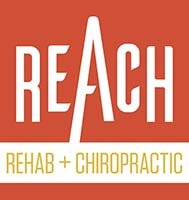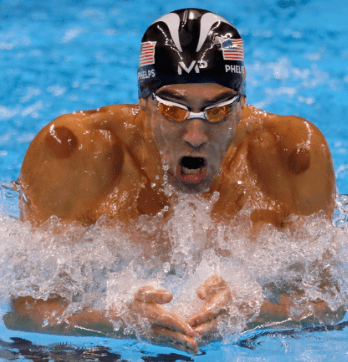Sadly, the Rio 2016 Summer Olympics are coming to a close. I don’t know how you feel, but I love watching the Olympics. However, the fishing they do to concoct elaborately interesting story lines can get irritating. Pre-Olympics, the focus was heavily on the controversy regarding whether athletes should even go to Brazil considering the environmental conditions and health concerns of the Zika virus. Quickly, the focused shifted over to questioning why the swimming athletes were:
– pelted with grapefruits
– attacked by octopi
– in a fight with a shop vac
Okay, so the descriptors above are obviously a joke, so what are those marks? It’s the result of cupping therapy. Just like how all the pink and blue tape on the beach volleyball players became very popular after the London 2012 Olympics, cupping is the new trendy therapy because of the notable marks it leaves on the bodies of highly decorated athletes like Michael Phelps.
Let’s talk briefly about what it is as well as what it isn’t.
What it is:
– an effective therapy when applied in the right situation by a licensed and experienced practitioner.
– a little-to-no-risk, high reward soft tissue technique where you utilize a plastic or metal cup to create suction, pulling the skin.
– localizes blood flow to the affected area to help with healing and detoxification.
– creates lift between the skin and fascia (like a cat lifted by the neck skin) to restore the normal slide and glide in and area that has become restricted due to strenuous activity and overuse.
– best applied as a recovery tool or supplementary to other treatments in a treatment plan.
What it isn’t:
– meant to treat a particular disease or replace conservative, holistic, or medical treatments that are based upon a thorough history, exam, and assessment.
– a trendy fashion statement
– painful, when applied correctly.
– the “silver bullet” treatment
– backed by solid research
 What about those purple welts?
What about those purple welts?
Depending upon how the cupping therapy is applied, it can leave red and purple-looking temporary circular marks, which is a result of the suction of the cups pulling blood to the surface of the skin. The longer a cup is in a particular spot, the darker you can expect the mark and the longer it will take for it to go away. Cups are left on anywhere from a few minutes up to fifteen, which can look pretty grotesque! When cupping with slow oscillating movement, it significantly lessens the aesthetic aftermath. Depending upon the treatment approach, how long cups are in a particular spot, and the person’s body, discoloration can normalize anywhere from 2-10+ days. In my opinion, the pictures to the right display mindless cupping for the sake of cupping and is absolutely out of control to do in one treatment session. I’d bet logic would tend to agree as well!
How do you use it and is it right for me?
We use cupping as an adjunct therapy to bring blood flow and restore slide ‘n glide to an area where the muscles are tight, sore and feel ropey (fibrotic). It works very well as a recovery tool to mitigate the post-exercise effects of strenuous training, which is why many professional athletes are all about it. It’s hotly debated whether it provides anything more than a placebo effect. Even if true, if the athlete believes it helps, then it helps — bottom line. Did it help Phelps become the most decorated Olympian of all time? At least, if it improved his performance psychology, then yes, it did decorate him in gooooooooooold!
Cupping in inappropriate in cases of moderate-to-severe circulatory or hemorrhagic diseases such as (but not limited to) cardiac failure, renal failure, severe edema, hemophilia, leukemia, and allergic dermatitis.
You can buy your own cups on the interwebs and apply the therapy yourself; however, I would refrain from doing so without proper guidance.
Just like everything else, it’s another tool in our proverbial tool belt, and the application is based on clinical experience and a thorough history, examination, and assessment. It’s not the therapy but how and who applies it. One of Team USA’s athletic trainers made the perfect comment regarding the hype around cupping: “Asking a therapist about cupping is like asking a world renowned chef about the garnish on a recipe.” It’s such a small part of what they do.
To the weekend,
Dr. RJ Burr


